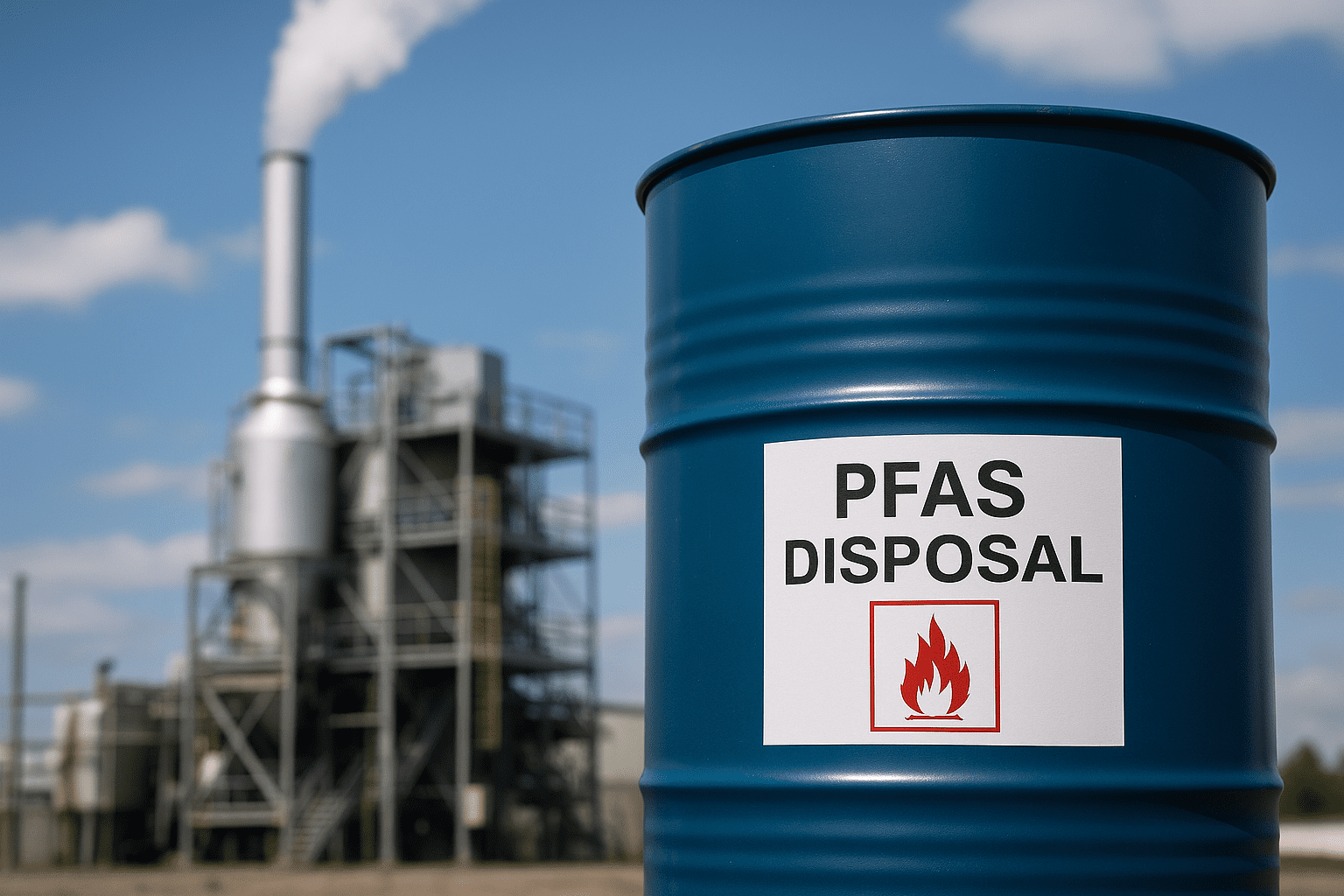Exclusive for Fire Buyer Dr. Ian Ross, Technical Director and Global PFAS Practice Lead at Tetra Tech discusses PFAS in fire suppressions systems.
Increasing attention to the environmental and human health effects of fluorosurfactants present in C8 (long chain) and C6 (short chain) firefighting foams, termed per- and polyfluoroalkyl substances (PFASs), is leading to the development of increasingly conservative (low) regulatory levels in drinking water globally. The ongoing use of firefighting foams containing C8 and C6 fluorosurfactants, termed aqueous film forming foams (AFFF) and fluoroprotein foams (FFFP and FP) is under significant scrutiny as numerous drinking water supplies are identified to be contaminated by PFAS, with 6 million Americans impacted in 2016. PFAS are all extremely persistent in the environment, so have been termed “forever chemicals” and are the subject of a recent Hollywood film called ‘Dark Waters’.
There are a growing number of lawsuits are being filed against polluters by communities and businesses impacted by PFAS contamination. For instance, some $212M was recently paid to a PFAS-impacted community in Australia, located along a 9-mile PFAS groundwater plume, caused by use of firefighting foams, which impacted the drinking water supply to the town of Katherine.
Following publication of the new, significantly lower, UK drinking water standards for PFAS earlier this year, in addition to a ban of training and testing using C8 foams in Europe from 2020 do many organisations know which PFASs are contained within their fire suppression systems or understand the implications of holding these foams?
A snapshot of the PFAS issues facing the firefighting industry
Over the last two decades there has been a migration away from C8 firefighting foams that contained PFOS (perfluorooctane sulphonate), but foams containing PFOA (perfluorooctanoic acid) and its precursors continue to be sold, albeit with progressively lower concentrations of these C8 PFAS.
The reality, however, is that C6 foams contain fluorotelomer PFAS which are precursors to an array of bioaccumulative intermediates and extremely persistent terminal products, with less understood regarding their toxicology. Hence why in 2019 the European Chemicals Agency (ECHA) proposed a restriction that will prevent the use of C6 foams.
With an increase in environmental regulation of short chain PFAS, this has led many foam users to transition to using fluorine free firefighting (F3) foams. The extinguishment performance of these F3 foams being proven in multiple sized tests since 2002. Given the continued use of PFAS-containing foams seems likely incur significant environmental liabilities for the end user, switching to F3 foams is a wise decision.
Keep one step ahead of the regulation
Regulations commencing in July 2021, stipulate that holding over 50 litres of PFAS-containing firefighting foams can represent a notifiable stockpile of persistent organic pollutants (POPs). The nature and volume of foam held is required to be reported to the Environment Agency annually.
Establishing the nature of each foam and whether it exceeds the criteria that determine whether it represents a notifiable stockpile requires chemical analysis of PFAS present in each foam. For example, determining whether a C6 foam stock comprises a notifiable stockpile of POPs would require chemical analysis to determine whether select PFAS exceed low regulatory thresholds.
PFOA and its precursors, which are subject to the current stockpile regulations, are present at low levels in C6-foams currently being sold. When firefighting foams are replaced in suppression systems, a significant mass of C8 or C6 PFAS adhering to interior surfaces of these systems, in the form of layers, dissolves into the new foams. This means the replacement foams are likely to comprise a notifiable stockpile as a result of increases in their C8 content, as result of unsuccessful decontamination of fire suppression systems. Even some F3 foams have been determined to contain up to 1.6g/L PFAS, after suppression system decontamination using water flushing, with it being common that effective decontamination is not performed between foam changeouts.
Solutions to keep ahead of the curve
The chemical analysis required to determine whether a foam comprises a notifiable stockpile is termed the total oxidiseable precursor (TOP) assay, with published guidance on use and interpretation of this technique being essential to its application. Decontamination of fire suppression systems requires specialist cleaning agents to remove layers of self-assembled PFAS from the interior of fire suppression systems. These layers are water resistant, so flushing systems with water is ineffective.
When considering replacement of firefighting foams, dispensed fluorinated foams and foam concentrates cannot be treated using biological wastewater treatment plants, so AFFF, FP and FFFP should not be disposed of to any foul sewer. There are also increasing concerns that incineration of firefighting foam concentrates does not destroy PFASs, with litigation progressing in the U.S. claiming that PFAS in liquid wastes do not readily burn and are not destroyed under typical incineration conditions.
As transitioning to adopt F3 foams is becoming more common and environmental regulations tighten around PFAS in firefighting foams Tetra Tech has formulated a team of environmental and fire engineers to provide a series of services which deliver foam transition as a package. The team comprises PFAS experts to ensure regulatory compliance and effective decontamination, with seasoned fire engineers who can assist with any suppression system modification and ensure that insurers are comfortable with fire suppression systems adapted to use F3 foams. The team has access to technologies proven to destroy PFAS in liquid wastes and decontamination agents so can assist with the complexities of foam changeouts and regulatory compliance.
The bigger picture
When considering a portfolio of sites, where firefighting foams are stored in suppression systems at multiple locations, a review to establish the environmental sensitivity of each site can be useful to risk rank sites and determine their potential to impact drinking or surface waters, if a foam loss occurred. This can assist with prioritising managing environmental risks as foam changeouts affecting the firefighting industry are planned. There are many challenges to consider regarding PFAS and finding an experienced team will be essential for successful management of the business risks these persistent pollutants pose.









